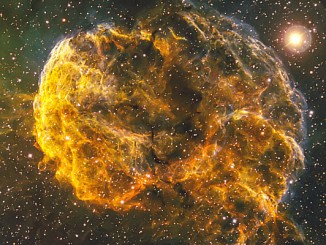
NASA is remembering the Rossi X-Ray Timing Explorer as a trail-blazing spacecraft that opened new windows on the astonishing high-energy environments around neutron stars and black holes.
Launched at the end of 1995, the decommissioned 6,700-pound spacecraft fell back into the atmosphere and burned up on 30 April, a fiery end to a remarkably successful mission.
“The data remain a treasure trove for studying compact objects, whether pulsars and stellar-mass black holes in our own galaxy or supermassive black holes in the cores of distant galaxies,” said Tod Strohmayer, who served as RXTE’s project scientist from 2010 through the end of the mission.
Black holes, by definition, cannot be directly observed because their powerful gravity prevents radiation from escaping. But gas and dust being sucked into a black hole gets accelerated to enormous velocities, generating friction and temperatures reaching millions of degrees.
As gas from a companion star or other source spirals around in the accretion disk of a black hole or reaches the surface of a neutron star, powerful X-ray bursts can occur, providing tell-tale clues about the structure and behaviour of the compact bodies.
NASA says RXTE provided the first observational evidence of a phenomenon known as “frame dragging” in which the extreme gravity of a rotating black hole pulls, or drags, the fabric of space-time around it as it spins. The spacecraft also showed that black holes of widely differing mass produce similar types of X-ray activity at time scales proportional to their mass.
And RXTE discovered a new class of neutron stars – magnetars – with magnetic fields a thousand times stronger than previously observed. Only 29 of the 2,600 known neutron stars are classified as magnetars.
“Observing these X-ray phenomena with precise high-resolution timing was RXTE’s specialty,” said Jean Swank, who served as the mission’s project scientist until 2010. “During RXTE’s run, no other observatory could provide these measurements.”
So far, more than 3,100 papers based on RXTE data have been published in scientific journals, work that has been cited more than 95,000 times. NASA is now collecting data on variable X-ray sources with an instrument mounted on the International Space Station.



